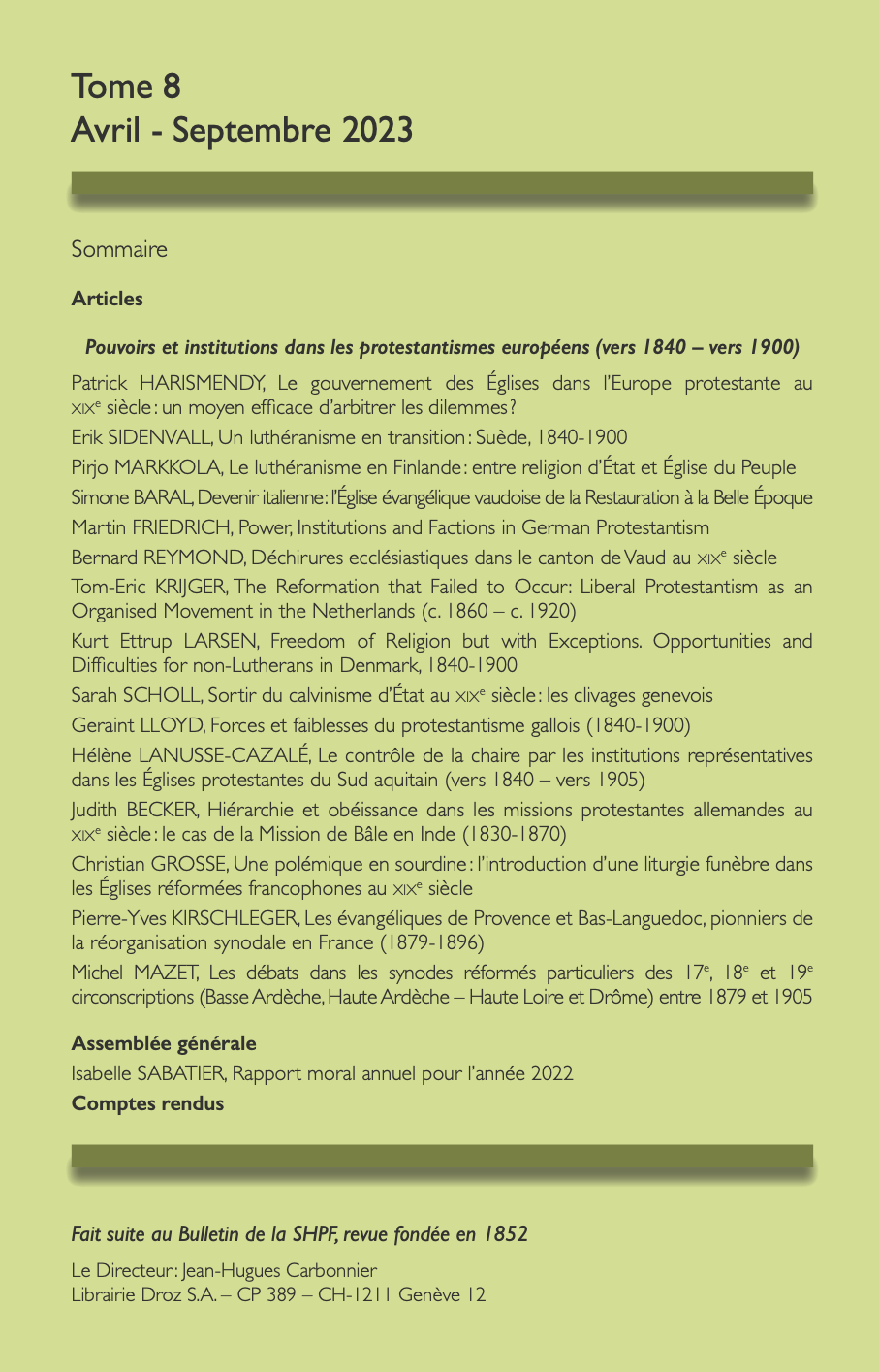Power, Institutions and Factions in German Protestantism
Abstract
Around 1830 German Protestantism saw the emergence of two schools that would leave their imprint on the religious landscape during the next several decades: first, the Vermittlungstheologie with its strong program for the reconciliation of faith and reason; and, second, Neo-Lutheranism which demanded allegiance to the confessions as a bulwark against the destructive forces of modernity. Especially in Prussia the conflicts surrounding the Union and confession were at the centre of many church-political debates, as Lutheran opposition impeded every efforts towards a greater intra-Protestant community. On the church-political level, aspirations for the greater independence of the Protestant churches were not fulfilled, until the synods were granted the right to participate in decision-making, first in Baden and then around 1873-1876 in Prussia. In the synods, the so-called Positive Union emerged as the new dominant party within the church, until the disempowerment of the Hofpredigerpartei in the final decade of the century ended its hegemony.

